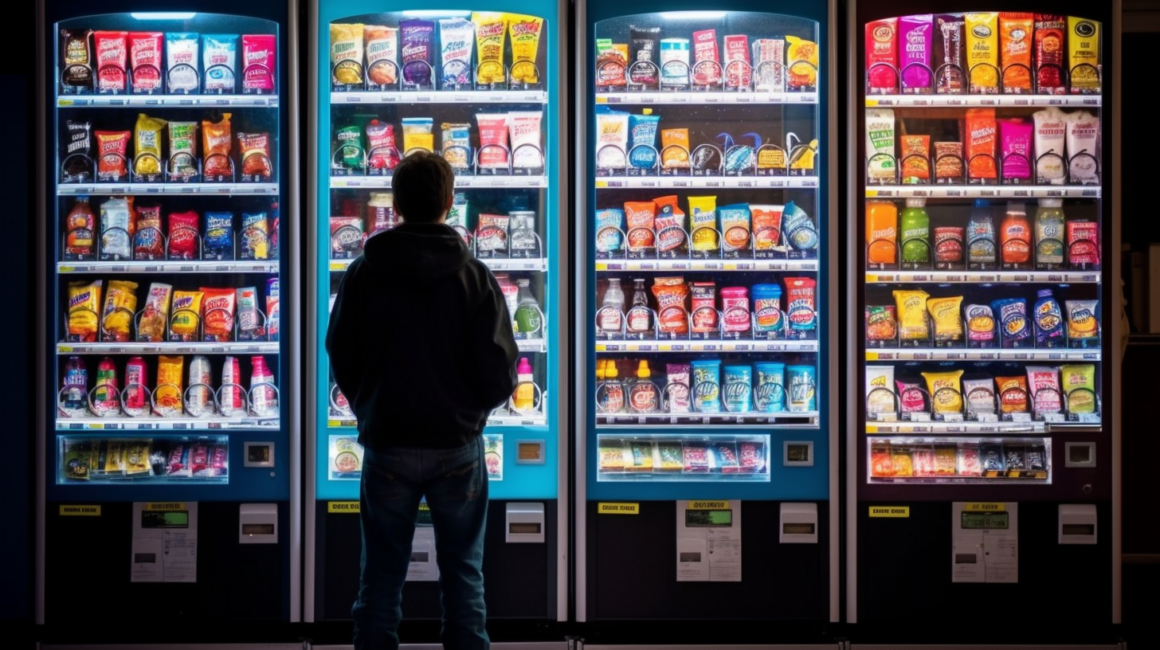When you walk up to a vending machine, select your favorite snack, and insert your money, you may think you’re making a straightforward transaction. However, there’s much more at play. Behind that simple exchange lurks a web of psychological triggers and behavioral economics, all cleverly designed to nudge you into making a purchase. Vending machine operators have fine-tuned pricing strategies to maximize profits and satisfy customers. There is a whole fascinating world of psychology behind these pricing strategies.
While factors like costs, competitors’ prices, and profit margins are crucial,
understanding the psychological drivers behind consumer behavior can give you
an edge. Why? Because pricing is not just a function of logic; it’s also about
perception. How consumers perceive the value of a product often dictates whether they will part with their money to acquire it.
Decoy Pricing
One well-known psychological tactic in pricing strategy is using a “decoy.” The decoy is a strategically priced item that makes other items look more attractive. Consider a vending machine that offers two types of chocolate bars: a regular bar for $1.00 and a larger, premium bar for $1.50. The regular bar is priced attractively, but the premium bar, only 50 cents more, is a tempting upgrade. Customers might think, ‘For just half a dollar more, I get a bigger, better bar!’ This shifts their focus from deciding whether to buy anything at all to choosing between the two, increasing the odds that they’ll opt for the more expensive option.
The Magic of the Number 9
Have you ever wondered why prices often end in the number 9? Studies have shown that prices ending in 9 drive more sales than round numbers. For example, an item priced at $1.99 is perceived as significantly less expensive than the same item priced at $2.00, even though the actual difference is just one cent. Vending machines often employ this tactic to make items appear cheaper than they are.
While some vending machine operators experiment with alternative pricing, such as ending prices with .75, the classic .99 pricing strategy has consistently proven more effective in driving sales.
Price Anchoring
Price anchoring takes advantage of the human tendency to rely too heavily on the first piece of information encountered when making decisions. In the context of vending machines, this could mean positioning a high-priced item next to cheaper options. The higher price serves as the “anchor,” making the less expensive choices seem like a bargain in comparison. This strategy often encourages customers to opt for the lower-priced item, convinced they’re getting a good deal.
Psychological Pricing Barriers
Price barriers are price points that consumers are hesitant to cross. For instance, while a customer might be willing to pay $1.99 for a soda, bumping the price to $2.01 might cause a significant drop in sales. Vending machine operators often meticulously set prices to stay just below common psychological barriers.
Convenience and Perceived Value
Often, the convenience of instantly and effortlessly accessing a product can outweigh the price concern. This is especially true in locations where alternative options are limited or non-existent. When a vending machine offers a product that meets an immediate need or desire, customers are usually willing to pay a premium. This perceived value can allow vending machine operators to set prices slightly higher without negatively impacting sales. As discussed above, it’s essential to recognize the price barrier your customers are willing to pay, but don’t underestimate the power of convenience. By enhancing the perceived value of your products, you can find that sweet spot where price becomes a secondary concern to the immediate gratification and convenience your vending machine offers.
Payment Options and the Pain of Paying
Psychology plays a role even in the way people pay for items. The “pain of paying” is less when using credit cards or digital payments than cash. That’s why modern vending machines that offer cashless payments can generally get away with slightly higher prices. The ease of swiping a card or tapping a phone lessens the mental friction of parting with one’s money.
Final Thoughts
The vending machine business is very much about understanding human behavior and leveraging psychological triggers to influence purchasing decisions. While these strategies might seem manipulative, they often serve dual purposes. They increase sales and help consumers make choices they’re happy with.



Leave a Reply